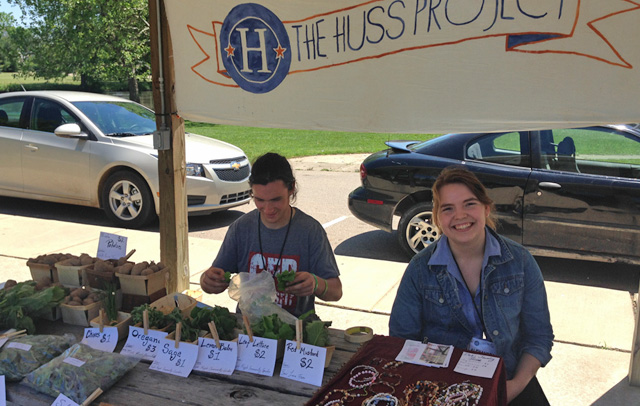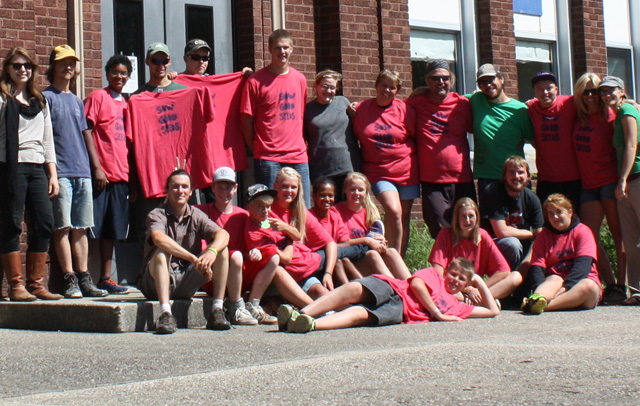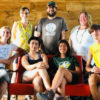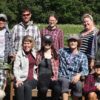Nine months ago, someone asked me if I’d always been a drifter. I didn’t know I was until they said it. But once they did, I knew it was true.
Arriving in Three Rivers, three hours from my childhood home of blink-and-you-miss it Maybee, MI — a home I hadn’t stayed in for more than three weeks in almost three years — I knew two things: my soul was beaten and tired, and yet some Elpis at the bottom of the Pandora Box of my heart was hungry for a meaning. It was begging for some new definition of purpose, because I’d burned up all my first drafts to that question in a recent bout of situational depression. I’d played the Divine Comedy backwards, finding the Woods and a personal Hell after leaving Paradise. Or at least my semester abroad in England had felt like paradise (semesters abroad always do). So there I was: weary, wandering, not having stayed in one place for more than five months in four years, with half a heart left in Oxford and hauling the other shabby half out of my significantly dented 1997 Pontiac Sunfire the day I arrived at the Rectory.
The *cino application had asked “why here?”, “why choose *cino to for your summer?” I’d been devouring writings on the Slow Food movement and sniffing around the works of Wendell Berry, so the topic of agrarian ethics was in my head and I said I wanted “definitions for the good life I thought I was starting to form a rough outline on.” I thought I’d get some hippy wisdom here, a hipster blog post there, it’d be a good time. The thing is, most of us interns said we didn’t really have an expectation about the summer because we had no idea what we were going to be doing. And that’s not a critique of the intern program, it’s a comment on the nebulous nature of *cino’s vision. Now, that’s not a “we have no real vision” kind of nebulous nature. The Huss Project is 27,000 square feet of solid vision. World Fare = serious, definable, fair-trading vision-ness. School lunches, Community Fun Nights, storytelling nights, Future Festival: all solid visions and measurable in smiling faces or full stomachs. And yet *cino’s vision is nebulous, its work hard to define. We often toss around the words community development, but for me, describing *cino as that would be akin to defining a mother simply as “a woman who has birthed a child.”
The vision of *cino permeates everything. Yes, we all work, live, and play together. And yes we’re all working under the same general goals and similar drafts of a life vision, but the sole thing that appeared to me to unify everyone under the *cino banner was the question “how do we do life well?” Not right or correctly, not successfully, just well. As a quote from the homesteading, self-sustaining classic “Living the Good Life” by Helen and Scott Nearing goes: “There are several ways to perform almost any act — an efficient, workable, artistic way and a careless, indifferent, sloppy way. Care and artistry are worth the trouble. They can be a satisfaction to the practitioner and a joy to all beholders.”
That’s *cino to me. It’s a bunch of people asking the “how do we do life well?” question. How do we do it beautifully but not superficially? Practically but not soulessly? How do we create something sustainable, relational, genuine, joy-filled, and healing? How do we love through how we live life? Because it’s the mugs on wooden s-hooks for the public to drink coffee of freely at World Fare. It’s the home-planted, home-grown, and home-made food of Community Potlucks. It’s the talk and the stories and the no-there-will-not-be-money-in-this-and-yes-it-is-important attitude. It’s the spontaneity and the play. It’s the dedication to the local, whether in food or friendship. It’s life. It’s love.
Is it perfect? Never. But being alive necessitates imperfection. *cino did give me definitions. More than I was looking for. And I’m an unabashed fan of the *cino core values and all they represent. And they helped give my own self a few new definitions. I’m a dinner-party addict. An insatiable cuddler. I’m very aesthetically-oriented and I tend to romanticize most things. I’m also a drifter. Just taking it one thing at a time.
So the summer? It reminds me of that ancient al rustica hymn of Americana, “Down to the River to Pray:”
As I went down in the river to pray
Studying about that good ol’ way…
Above: Alexandra and Seth work the Huss Project table at the Three Rivers Farmers Market.






